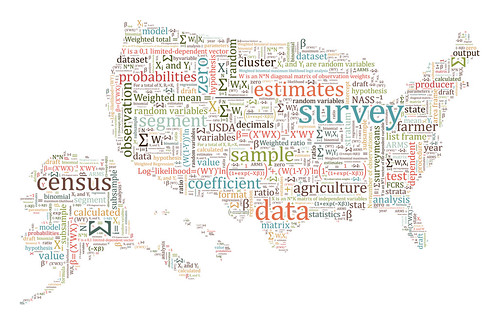
Since 1840, the U.S. government has collected important census data on agriculture. The purpose of the Census of Agriculture is to account for all U.S. farms and to summarize the characteristics of those farms and their operators at the national, state, and county levels.
Today, the Census is the only comprehensive source of statistics on American agriculture that provides information by county. So, why do we call the numbers we produce estimates? Aren’t the numbers known exactly? These are the questions I am often asked when discussing the agricultural census. The fact is that we do not know the numbers exactly so we produce the best estimates we can, given the data we collect.
Why don’t we know the numbers exactly? NASS goes to great lengths to get a list of all farmers or potential farmers. However, some farms are not on the list. These tend to be the small farms and those that have been started recently. In 2012, an overwhelming number of people who received a Census of Agriculture questionnaire responded. At the same time, that number is still less than 100 percent.
A big part of our challenge lies in the definition of a farm. As defined by Congress, a farm is any agricultural operation that had $1,000 in sales in the census year or had the potential to have $1,000 in sales in the census year. Consider for example your neighbour with a large vegetable garden who sells the excess produce at a farmer’s market or someone who grows and sells Christmas trees to bring in a little extra money. Both of them could be farmers by the definition, but may not think of themselves as such. So, on the census, some farms are misclassified as non-farms and some non-farms are misclassified as farms.
NASS uses statistical methodology to correct for under-coverage (farms not on the original list), non-response (people not returning their census questionnaires), and misclassification (whether an operation is correctly classified as a farm or not). The uncertainty these adjustments may introduce causes us to not know the exact numbers. However, we can quantify the uncertainty we have about the numbers.
Luckily, every year in June we conduct a survey that is a sample of farms in the United States. By matching information from this survey with information from the Census, we can develop statistical models. These models take into account the size of the farm (in terms of both its agricultural sales and the land area it covers), the age of the operator, the type of farm it is, and a number of other features of the operation. Using these models, we can adjust for under-coverage, non-response, and misclassification to develop accurate and reliable estimates for U.S. agriculture.
With the 2012 Census preliminary data release scheduled on February 20, just 2 weeks away, I hope this helps you better understand why we call our data “estimates” and how we arrive at those numbers. If you’re interested in learning more about the census of agriculture data, I suggest you check out www.agcensus.usda.gov.
